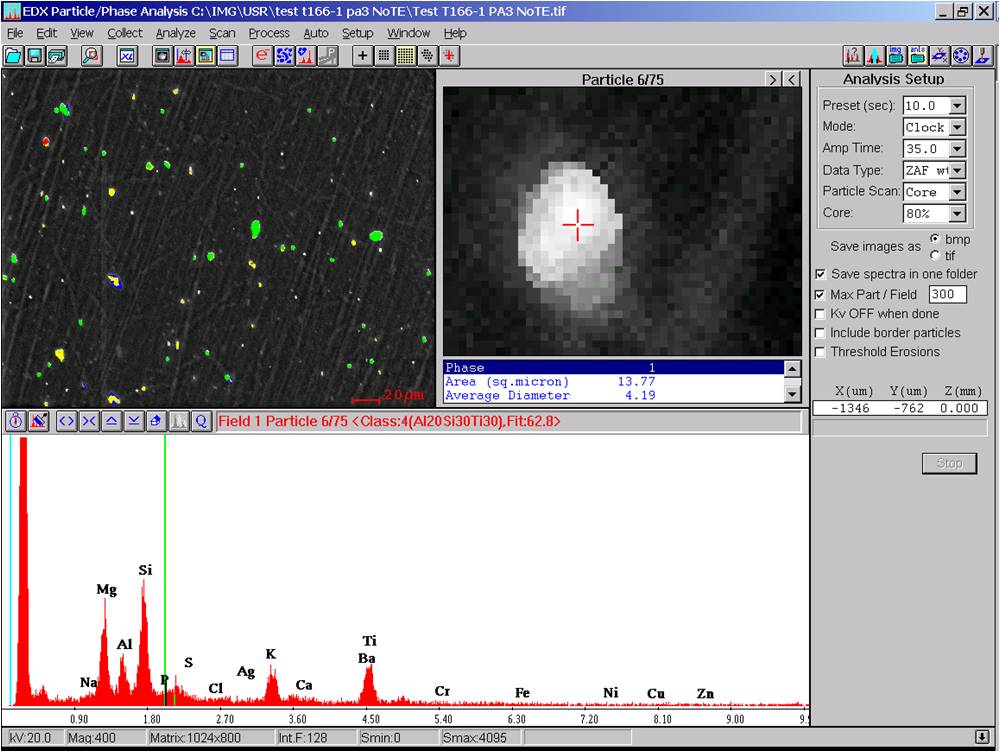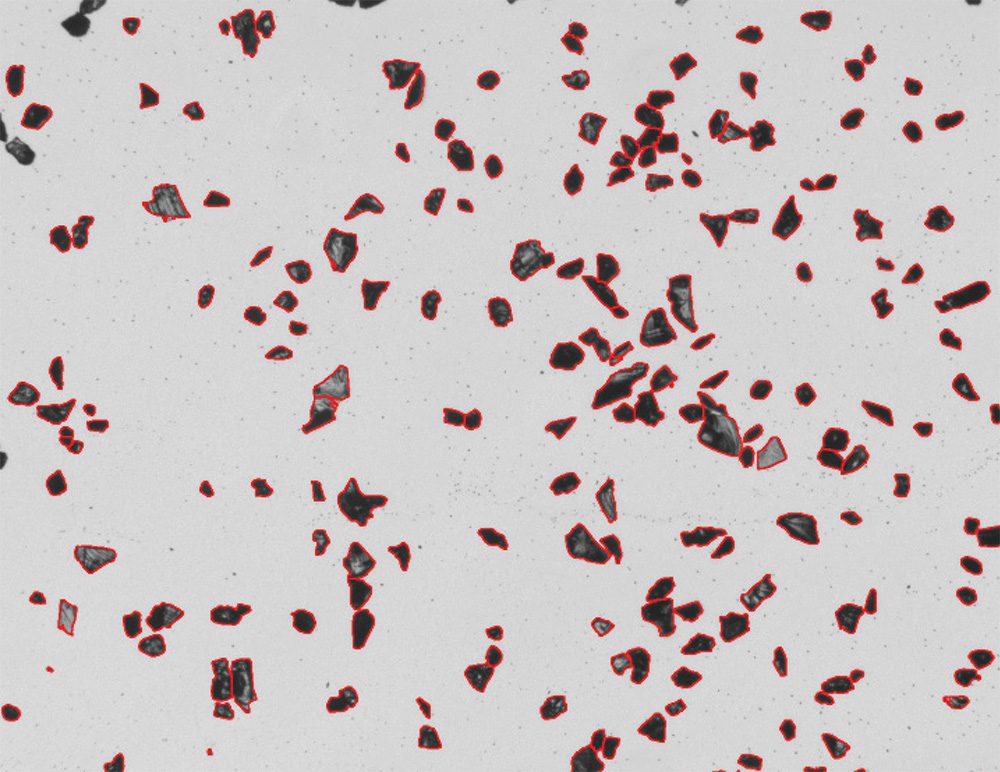

All operations are easy to perform, so even people who have difficulty handling machines can quickly and accurately perform observation and analysis.
#Imagej particle analysis series#
One-click automatic calibration is possibleįurthermore, the VHX Series is fully loaded with functions that reduce the load of particle size analysis such as high-resolution lenses and a motorised revolver that enable seamless zoom that can change the magnification between 20x and 6000x without lens replacement. Automatic area measurement with image binary processing using the VHX Series 4K Digital Microscope It is also possible to perform analyses with the same conditions by using image data that was measured in the past.įurthermore, measured values can be output to tables and histograms, which makes it possible to quantitatively determine the particle size distribution characteristics. After the image is binary processed according to brightness or colour, parameters such as the area, maximum diameter, and minimum diameter can be calculated targets that are not required can be excluded and overlapping targets can be separated. Automatic area measurementĪrea measurements and counts can easily be carried out within the specified range on the target. These measurement/analysis methods use the regularity of how the strength of the dispersed light is proportionate to the number of particles and the relationship between the size of the particles and the dispersion/diffraction pattern. Methods in which laser emission is used for particle size distribution and particle size analysis.

Laser diffraction and laser dispersion methods Lastly, automatic area measurement using image binary processing as well as imaging setting reproduction and calibration can be performed with easy operations, enabling even inexperienced inspectors to carry out these tasks. In particle size distribution and particle size analysis using the VHX Series 4K Digital Microscope, various measurements can be performed while observing the actual particles. Image binary processing mechanismīinary processed image with a threshold of 127 Examples of Particle Size Distribution and Particle Size Analysis Using KEYENCE’s Latest 4K Digital MicroscopeĬonventional laser diffraction and laser dispersion methods cannot be used to observe actual particles.* What’s more, observation with microscopes requires a high degree of proficiency, and the obtained data must be analysed with different software. Performing binary processing on an image makes it possible to perform the processing of extracting just the information of whether a pixel is black or white from the required part, thereby making particle size analysis easier and faster. The range over which to perform binary processing can also be specified. Values smaller than the threshold are converted to white. Values larger than the threshold are converted to black. The value of each pixel is compared against a set arbitrary threshold. Image binary processing refers to converting an image having gradations to black and white. What Are Particle Size Distribution and Particle Size Analysis Using Image Processing? View, Capture, and Measure with Just One Device.Imaging setting reproduction and calibration.Examples of Particle Size Distribution and Particle Size Analysis Using KEYENCE’s Latest 4K Digital Microscope.What Are Particle Size Distribution and Particle Size Analysis Using Image Processing?.

This section introduces examples of using the VHX Series, KEYENCE’s latest 4K Digital Microscope, to solve the problems in particle size distribution and particle size analysis. Recent digital microscopes not only have high image quality but also are equipped with particle extraction and quantification by way of image binary processing, measurement condition reproduction, and other such functions to support a variety of requirements. In recent years, high-performance digital microscopes have been added to this list of devices due to improvements in CMOS image receiving elements, lens accuracy, lighting technology, and image processing technology. Conventionally, particle analysis was performed with laser dispersion particle analysers and microscopes.


 0 kommentar(er)
0 kommentar(er)
